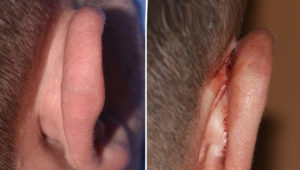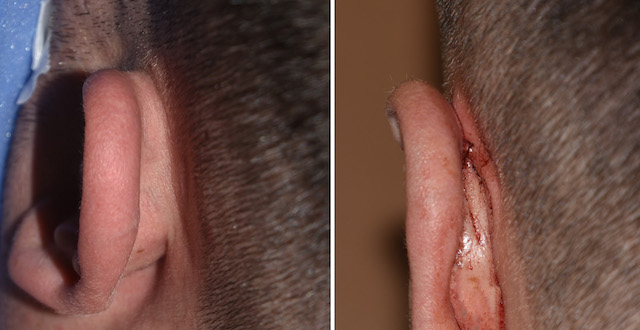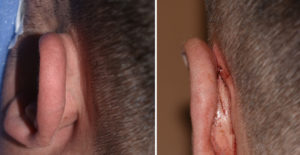The most common procedure in ear reshaping is a setback otoplasty. Done since the late 1890s the treatment of the protruding ears has undergone a evolution in techniques. Initially relying on skin removal from the back of the ear only, less relapse was associated with manipulation of the ear cartilages. Folding back of the ear cartilage, with or without cartilage scoring or excision, produces more sustained results with negligible relapse.
The goal of setback otoplasty is to get an even helical rim profile from top to bottom that is not too far away or too close to the side of the head. While what is the most pleasing auriculocephalic angle can vary amongst patients, it is important to avoid an over corrected ear that is pulled back too far which is harder to revise than an under corrected one.
One characteristic that I have seen in more than one male setback otoplasty patient is the desire to have the top of the ear very close to the side of the head. They almost always have had a prior setback otoplasty that has been successful with the exception of a top of the ear that still sticks out to them. They push the top of the ear inward for the change they want and it is flush with the side of their head. They have either a close cropped hair cut or shave their heads…which is why the top of the ear position is so important to them.

This technique for making the helical root attachment of the ear closer to the side of the head is known as postauricular sulcus reduction. It is usually for the male patient who wants maximal inward positioning of the upper ear. While can be performed at the same time as a setback otoplasty, its need is often not recognized until after the primary ear reshaping procedure.
Dr. Barry Eppley
Indianapolis, Indiana




